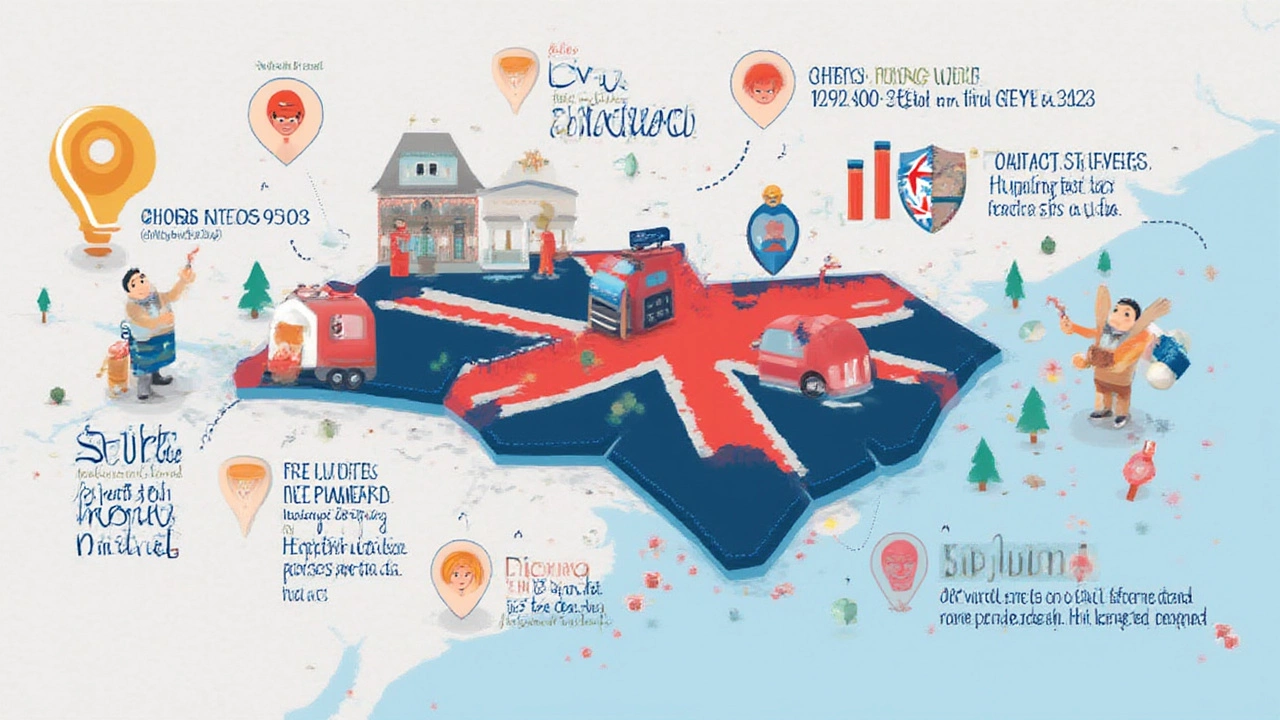Picture this: you're sipping sweet tea on a Charleston porch, the breeze off the marsh twisting through live oaks — but in the back of your mind, the price of protecting your Southern home keeps poking you. Homeowners insurance in South Carolina isn't just another line on your budget. With wild swings in weather and a booming property market, your zip code can change what you pay just as much as the house itself.
What Is the Average Cost of Homeowners Insurance in South Carolina?
So, how much are most folks paying right now? As of early 2025, the average annual premium for homeowners insurance in South Carolina runs about $2,325, according to freshly released data from the National Association of Insurance Commissioners (NAIC). That might make your eyes water, but let's get into what that number really means. This rate covers a standard policy with $300,000 in dwelling coverage, $1,000 deductible, and typical liability limits. It's almost a thousand bucks more than the U.S. national average, which sits close to $1,400 this year.
The big reason for this gap? South Carolina's spot on the map. Hurricanes, tropical storms, and coastal flooding all drive up risk for insurers — and higher risk means higher premiums for you. Take Charleston, Hilton Head, or Myrtle Beach: ocean views mean you’ll likely fork out even more. A new report from S&P Global in May 2025 shows premium growth in Horry County (think Myrtle Beach area) leapt by 11% over last year, with some insurance companies pulling out entirely or scaling back.
| City/Area | Average Annual Premium (2025) |
|---|---|
| Columbia | $1,675 |
| Charleston | $3,050 |
| Myrtle Beach | $3,415 |
| Greenville | $1,420 |
| Hilton Head Island | $3,690 |
Live a little inland, and things calm down. Greenville and Columbia tend to see significantly lower rates since they're less vulnerable to hurricanes and saltwater flooding. Still, even away from the coast, rising material costs and insurance company losses since 2022's Ian and 2023's Nicole storms have nudged prices up about 8-12% a year. Plus, lenders now require proof of coverage at closing. No insurance? No mortgage.
Some quick-fire facts: the most expensive zip codes are mostly clustered along the coastline. If your home was built before 2000 or lacks hurricane shutters and modern roofing, you'll fork out hundreds more. People bundling their auto and home policies save around $400 on average, and a newly built home can land a 20-25% discount. The catch? Deductions for wind and hail damage are almost always higher and often require a separate or add-on policy for flood insurance, lest you get blindsided by rising tides.

What Drives South Carolina Homeowners Insurance Rates?
There's no single answer. South Carolina's insurance scene is a stew of natural threats, building costs, and insurance company math. Let’s break down the key culprits:
- hurricane risk — All eyes on the coast: hurricanes are unpredictable and expensive. Every June to November, insurers brace for another storm season. The more coastal you are, the pricier your policy.
- Flooding — Regular home insurance nearly never covers flood damage. FEMA maps show that as of January 2025, at least 30% of homes in Horry, Beaufort, and Charleston counties are in major or moderate flood zones. You'll likely need extra flood insurance from the NFIP or a private insurer, tacking on $600 to $2,300 per year.
- Wildfires — Not what most people expect, but certain Upstate patches and the sandhill regions have seen small spikes in wildfire claims since 2020, making a dent in some policies.
- Construction costs — Lumber, drywall, and labor have gotten pricier since COVID-era shortages. Recent South Carolina Homebuilders Association reports detail a 14% jump in raw materials costs since 2022 — and premiums climb right along with replacement costs.
- Crime rate — Living in an area with higher break-ins or vandalism? Expect higher premiums, especially in pockets outside Columbia, Charleston suburban sprawl, and smaller coastal towns where property crimes tick up during tourist season.
Plus, your own choices matter. Your credit score affects your premium — those with poor credit pay up to 60% more. Home size, age, construction materials, and even your pet’s breed (crazy, but true: insurers have lists of “dangerous breeds” that add to your bill) change your annual cost. Raising your deductible lowers your rate, but it means more out-of-pocket if you file a claim.
One thing to watch: climate change is causing insurers to adjust their models. After multi-billion dollar payouts following storms in 2022 and 2023, many providers are hiking rates or limiting coverage altogether, making it tougher to shop around.

How to Save on Homeowners Insurance in South Carolina
If you’re feeling the pinch, there are smart ways to shave dollars off your bill without gutting your coverage. Here’s what savvy South Carolinians are doing:
- Shop around and compare three or more quotes. Don’t stick with your lender’s “preferred” insurer; it rarely gets you the best deal.
- Bundle auto, life, or boat insurance. Many companies offer chunky discounts — think $400 to $800 — for combining policies.
- Raise your deductible, but not so high that you couldn’t cover a claim. Moving from a $500 to $2,500 deductible cuts premiums by up to 18%.
- Add wind-resistant features: hurricane shutters, impact-resistant windows, fortified roofing. Ask about IRMA credits — South Carolina rewards these upgrades through state-incentivized premium deductions.
- Stick with higher liability, but don’t buy more personal property coverage than you need. Take a home inventory so you know what’s actually worth covering.
- Install a security system. Monitored alarms can cut rates up to 10%. Flood sensors and smart smoke detectors stack on extra discounts.
- Keep your credit strong. Regularly check your report — cleaning up one missed payment can lower your rate hundreds of dollars a year.
- If you’re in a coastal area, look at “named storm deductibles.” Some policies only kick in for hurricanes, not all wind damage. Read the fine print to avoid nasty surprises.
- Ask about loyalty or claim-free discounts. Five years without a claim can unlock special loyalty rates with many providers.
For anyone buying in 2025, be prepared: most lenders now require proof of flood insurance, especially in mandatory FEMA flood zones. And don’t forget: the state-run South Carolina Wind and Hail Underwriting Association (often called the “wind pool”) covers homes on the coast if you can’t get private insurance, but it’s rarely the cheapest route.
If you’re house-hunting, keep insurance in mind. Sometimes, a home $20,000 cheaper might end up pricier month-to-month once you roll in insurance, property taxes, and add-ons like flood coverage. Always ask for a CLUE report — that’s a claims history on the property — to spot previous issues that could hike your premium. And check your agent’s answers about exclusions, named perils, and limits. It's not just about price, but what you get if disaster hits.
South Carolina homeowners insurance isn’t always cheap, but it doesn’t have to be a mystery. With a little homework and a few clever tweaks, you can put some breathing room back in your budget and relax a little, even when the wind picks up outside.
